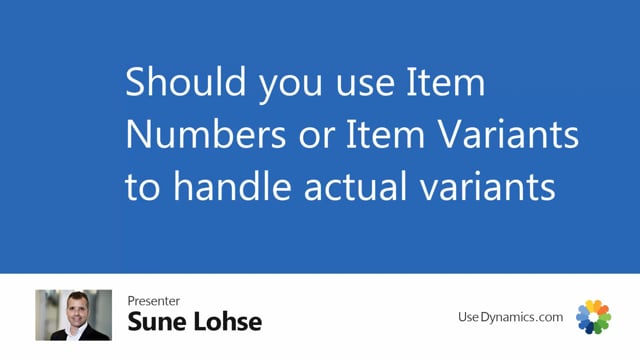
We see customers that like to work with variants with the normal structure, having an item number and then the underlying item variant table where they can add all the different variants.
And we have other customers that like to have a structure more like this, where you have each variant created as a separate item number.
Both of them has different advantages and disadvantages.
The second one would have an advantage that you only have one number.
So in the warehouse it’s easier to scan or everywhere you hand the item number, you only have one item number.
It’s even easier to order the overview, the inventory on the item list.
And often we see that customer would like to have one unique item number with nothing, nothing else.
Disadvantages would be that if you have many item variants, this list could be very long, uh, whereas the other list could be shoulder.
So of course in this example you could just filter on the style variant being, uh, false and then you don’t see all the variants.
So it’s of course easy to build overviews in many different ways, and, but it’s, um, matter of taste.
If you want one or the other, you can actually work with both, uh, at the same time with the master data information.
So it’s the template on the item card that determines for each item, whether it’s using one or the other strategy.
So on this item on my style template, I used the style template here with item or table number 54 0 1, which is the item variant table.
On the other one, item number 7,000.
Uh, I use the style I that I call T-shirt item variant, which is on table item directly.
And thereby when I create item variance or when I use the matrix windows on purchase and sales orders, it determines automatically whether it’s one or the other.
So as a user, the functionality looks the same, except I have many item numbers on the item list.
What you should discuss before creating your master dates or your data structure, if you want to use one or the other strategy, or even a combined strategy.

